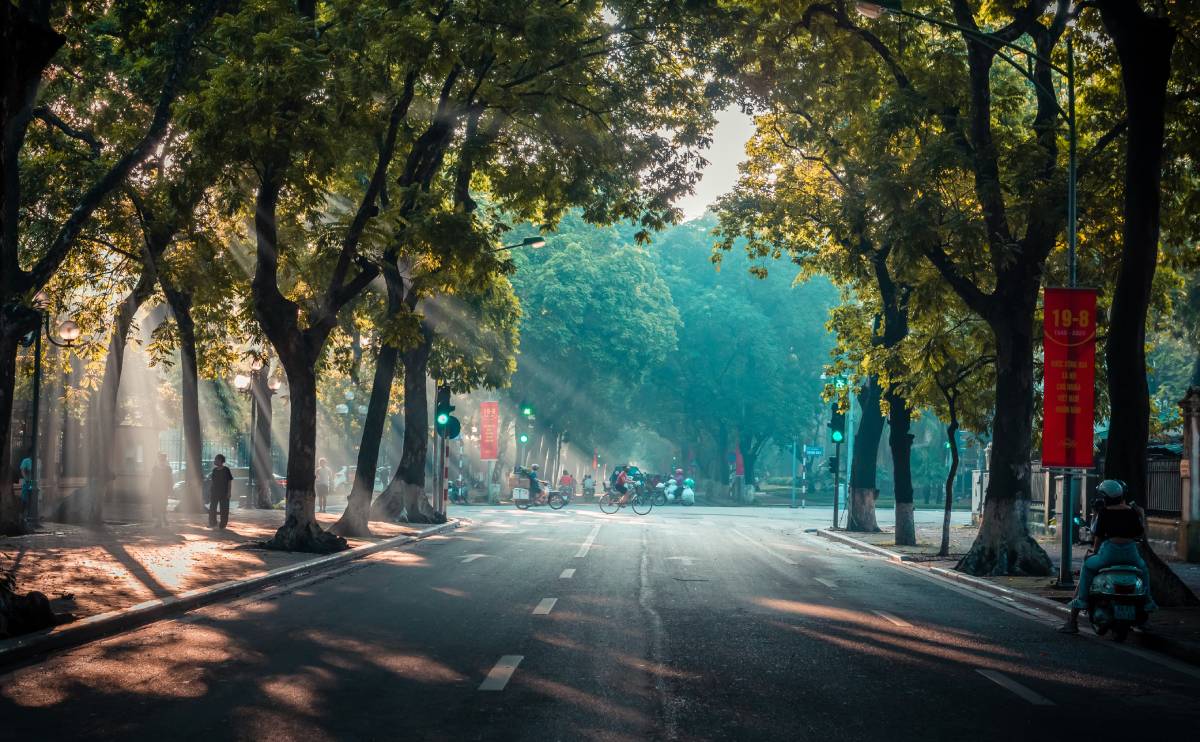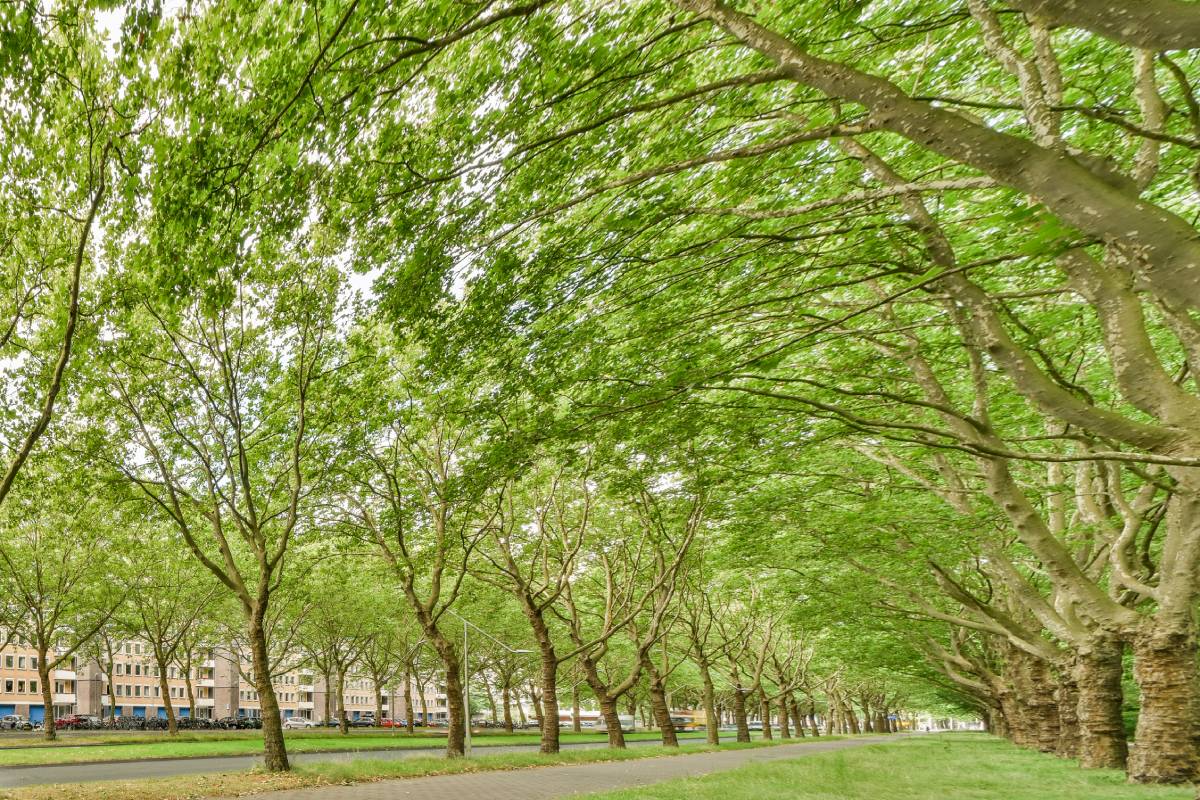

Street trees play a vital role in combating the urban heat island effect, making our cities more comfortable and sustainable places to live. But first, let’s understand what street trees are and why they are so crucial.
Street trees are trees planted along sidewalks, roads, and in urban areas to enhance the overall environment. They serve as green companions amidst concrete jungles, bringing nature into the heart of our cities. These trees come in various shapes and sizes, ranging from towering oaks to smaller ornamental species. The primary purpose of street trees goes beyond mere aesthetics – they are essential players in addressing the urban heat island effect.
The urban heat island effect refers to the elevated temperatures in urban areas compared to their rural surroundings. This phenomenon arises due to the abundance of concrete and asphalt, which absorb and retain heat, creating hot pockets in cities. As a result, urban areas can become significantly warmer than their non-urban counterparts, impacting both the environment and the well-being of city dwellers.
So, how do street trees combat this heat island effect?
Firstly, street trees provide shade, acting as natural umbrellas for pedestrians and buildings alike. The canopy of leaves helps block the sun’s rays, reducing the amount of direct sunlight that reaches the ground. This shading effect is particularly beneficial on hot summer days when temperatures can soar. By creating cooler pockets of air, street trees contribute to a more pleasant and bearable urban environment.
Moreover, street trees play a crucial role in the cooling process through a phenomenon called evapotranspiration. This is the combined process of water evaporation from leaves and the release of water vapor through plant stomata. As trees transpire, they release moisture into the air, creating a cooling effect similar to the way our bodies cool down through sweat. This natural cooling mechanism helps mitigate the heat absorbed by urban surfaces and lowers overall temperatures in the surrounding area.
In addition to their cooling effects, street trees contribute to improved air quality. They act as natural filters, trapping pollutants and particulate matter from the air. Through a process known as phytoremediation, trees absorb and break down harmful pollutants, releasing clean oxygen into the atmosphere. Cleaner air translates to healthier communities and a reduced environmental burden on urban residents.
The benefits of street trees extend beyond environmental aspects; they also enhance the overall quality of urban life. Green spaces, facilitated by street trees, promote a sense of well-being and mental health. Access to nature within urban settings has been linked to reduced stress levels, improved mood, and increased physical activity.
In conclusion, street trees are not just ornamental additions to city landscapes – they are environmental superheroes combating the urban heat island effect. Through shading, evapotranspiration, and air purification, these green companions make our cities more livable, sustainable, and resilient to the challenges of a warming world. As we continue to build and develop our urban areas, prioritizing and expanding the presence of street trees should be a key consideration for a healthier and cooler future.
The benefits of street trees for air quality improvement
One of the primary ways street trees contribute to air quality improvement is through their natural filtration process. Trees act as green guardians, intercepting airborne pollutants such as dust, smoke, and particulate matter. The leaves and branches of these trees serve as a physical barrier, capturing pollutants and preventing them from circulating freely in the air. This filtration effect helps in reducing the concentration of harmful substances that can have detrimental effects on respiratory health.
In addition to physical filtration, street trees engage in a process known as phytoremediation. This fancy term refers to the ability of plants to absorb and break down pollutants, transforming them into less harmful substances. Through their roots and leaves, trees take up pollutants like nitrogen oxides, sulfur dioxide, and ozone, effectively purifying the air. This natural detoxification process is a powerful ally in combating the adverse effects of air pollution on both the environment and public health.
Street trees also contribute to the reduction of greenhouse gases, particularly carbon dioxide. Through photosynthesis, trees absorb carbon dioxide from the air and convert it into oxygen, a life-sustaining element for humans and other living organisms. By sequestering carbon, trees play a crucial role in mitigating climate change, a global challenge with far-reaching consequences. Thus, the presence of street trees not only improves air quality locally but also contributes to the broader effort of reducing greenhouse gas emissions.
The cooling effect provided by street trees further enhances air quality. During hot weather, trees provide shade, reducing the need for air conditioning in buildings. This not only conserves energy but also decreases the production of pollutants associated with energy consumption. The shade created by street trees helps maintain lower temperatures in urban areas, preventing the formation of heat islands and reducing the overall demand for cooling systems.
Beyond their environmental contributions, the presence of street trees has positive implications for public health. Improved air quality resulting from the actions of these green guardians is linked to lower rates of respiratory illnesses, cardiovascular diseases, and other health issues associated with air pollution. Access to cleaner air, facilitated by the presence of street trees, contributes to healthier communities and an enhanced quality of life for urban residents.
In conclusion, the benefits of street trees for air quality improvement are multifaceted and impactful. From physical filtration to the detoxification of pollutants and the reduction of greenhouse gases, these green companions play a vital role in creating healthier urban environments. As we strive to build sustainable cities, prioritizing and expanding the urban canopy through the strategic planting of street trees is a tangible and effective step toward improving air quality and fostering well-being for current and future generations.

Maintaining and caring for street trees
Maintaining and caring for street trees is essential to ensure they thrive and continue to provide the numerous benefits they offer to urban environments. From enhancing aesthetics to improving air quality and providing shade, street trees play a vital role, and proper care is key to their long-term health.
Regular Watering: One of the fundamental aspects of caring for street trees is providing them with an adequate water supply. Especially in urban settings where soil may be compacted and water may not easily penetrate, street trees may face challenges in getting the water they need. Regular watering, particularly during dry periods, helps keep the soil moist and supports the tree’s overall health. Mulching around the base of the tree can also help retain moisture and prevent weed competition.
Appropriate Pruning: Pruning is another crucial component of street tree care. Proper pruning helps maintain the tree’s shape, removes dead or diseased branches, and encourages new growth. It also enhances the safety of pedestrians and vehicles by preventing low-hanging branches. However, it’s essential to prune with care, avoiding excessive removal of healthy foliage, as this can stress the tree and make it more susceptible to diseases and pests.
Soil Health: The health of the soil in which street trees are planted directly influences their well-being. Compacted soil can restrict root growth and limit the tree’s access to nutrients and water. Implementing soil aeration and adding organic matter can improve soil structure and provide a healthier environment for the tree’s roots. Regular soil testing helps determine nutrient levels, allowing for targeted fertilization if necessary.
Protection from Damage: Street trees face various threats, including potential damage from construction activities, vandalism, and vehicle collisions. Implementing protective measures, such as installing tree guards or fencing, helps shield trees from physical harm. Adequate spacing between trees and surrounding structures also prevents issues like root damage and ensures proper air circulation.
Pest and Disease Management: Vigilance against pests and diseases is crucial for the well-being of street trees. Regular inspections can help identify signs of infestation or disease early on. In cases of pest problems, environmentally friendly control methods should be prioritized to minimize the impact on the broader ecosystem. Prompt action in addressing diseases can prevent their spread to other nearby trees.
Community Engagement: Caring for street trees is not solely the responsibility of municipal authorities or arborists. Engaging the local community is a vital aspect of successful street tree maintenance. Public awareness campaigns can educate residents about the importance of street trees and encourage their active participation in caring for these urban assets. Community tree care events, where residents come together to water, prune, or plant trees, foster a sense of shared responsibility and connection to the environment.
Professional Arborist Support: While community engagement is crucial, professional arborists play a central role in the long-term health of street trees. Regular assessments by certified arborists can identify potential issues, prescribe appropriate care, and address any advanced problems. These experts have the knowledge and skills to ensure that street trees receive the care they need for optimal growth and vitality.
In conclusion, maintaining and caring for street trees involves a combination of regular watering, appropriate pruning, attention to soil health, protection from damage, pest and disease management, community engagement, and professional arborist support. By prioritizing the well-being of street trees, communities can enjoy the multitude of benefits these green companions bring to urban spaces, creating healthier, more vibrant environments for everyone.

Conclusion: In the symphony of urban development, street trees compose a harmonious melody of environmental stewardship. As we witness their shade casting a cool refuge on bustling sidewalks and appreciate the cleaner air they provide, it becomes evident that the importance of street trees extends far beyond their ornamental value. To secure the ongoing benefits they offer, from mitigating the urban heat island effect to fostering healthier communities, a collective commitment to their maintenance and care is essential. Through this partnership between nature and urban dwellers, the legacy of street trees as vital contributors to sustainable and vibrant cities will continue to grow, ensuring a greener and healthier future for all.
